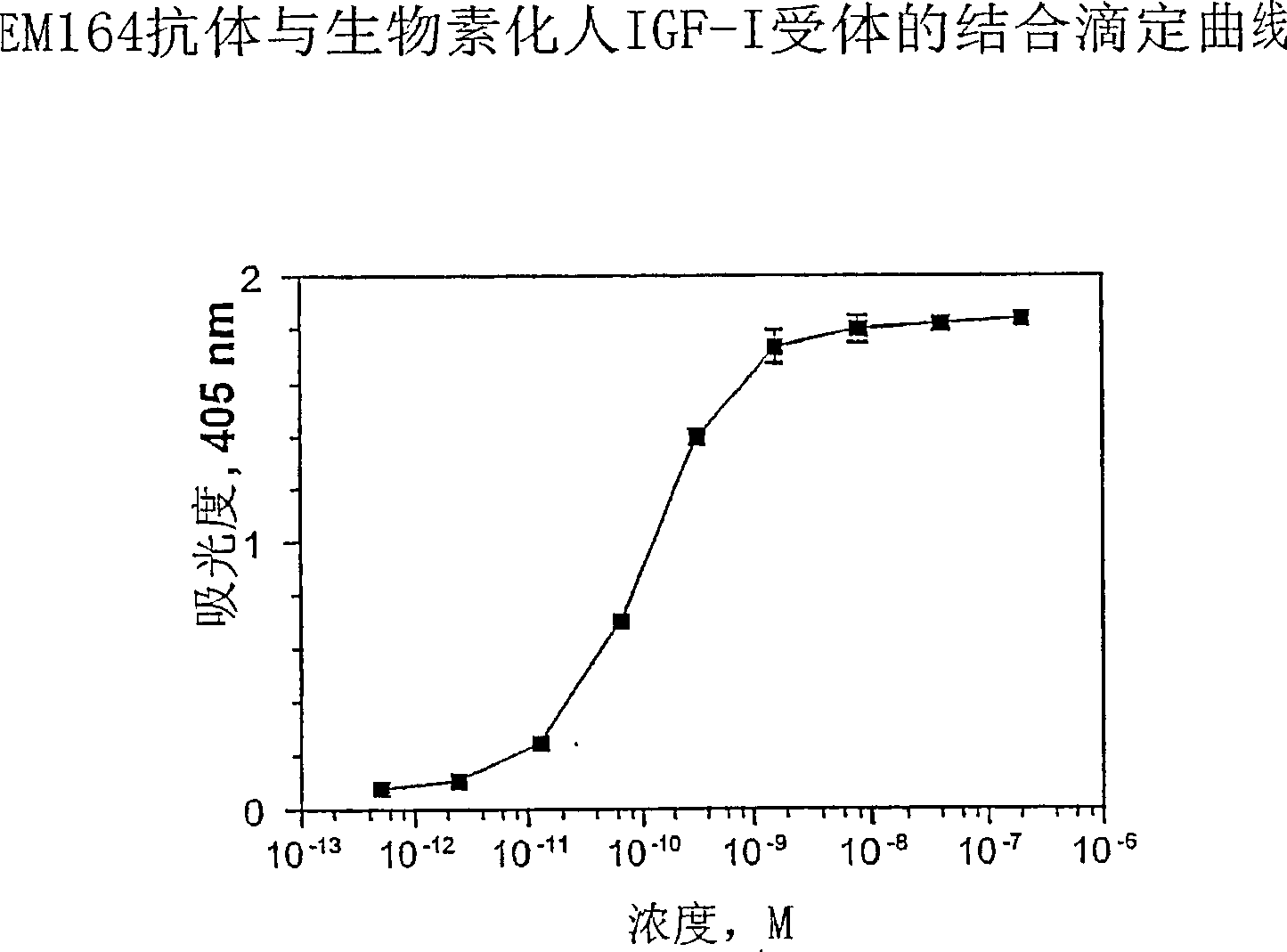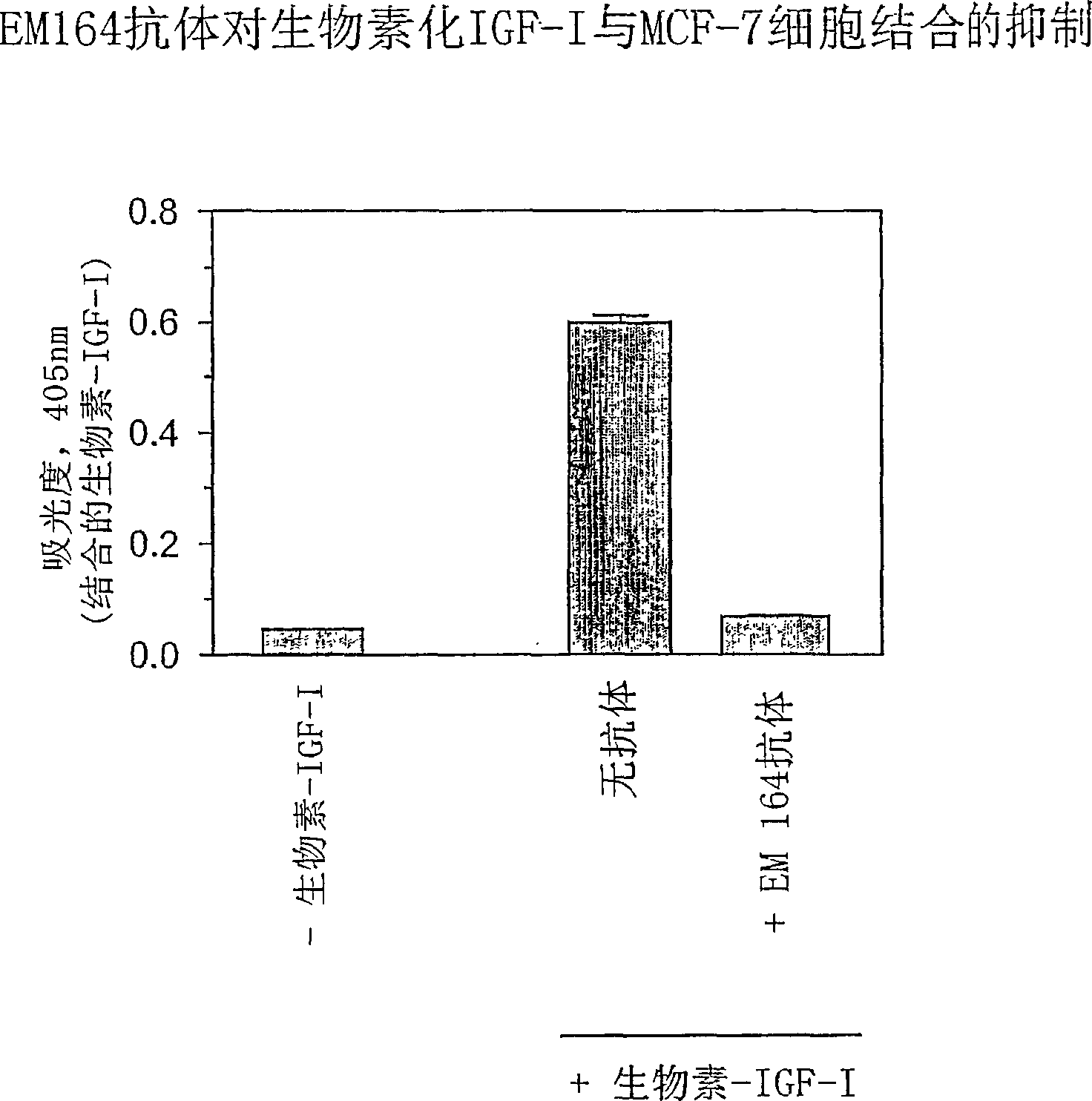Anti-IGF-I receptor antibody
An antibody and receptor technology, applied in the direction of antibodies, antibody medical components, anti-receptor/cell surface antigen/cell surface determinant immunoglobulin, etc.
- Summary
- Abstract
- Description
- Claims
- Application Information
AI Technical Summary
Problems solved by technology
Method used
Image
Examples
Embodiment 1
[0119] Example 1: Mouse EM164 Antibody
[0120] [105] In this first example, the complete primary amino acid structure and cDNA sequence of the murine antibody of the present invention are disclosed, as well as its binding properties and the manner in which it is expressed in recombinant form. Accordingly, the antibodies of the present invention and their preparation are fully and completely disclosed such that a person of ordinary skill in the field of immunology will be able to prepare the same without undue experimentation.
[0121] A. Generation of Anti-IGF-1 Receptor Monoclonal Antibody Hybridomas
[0122] [106] used a cell line expressing the human IGF-I receptor with the Y1251F mutation for immunization because it expresses a large number of IGF-I receptors (~10 7 / cell). The Y1251F mutation in the cytoplasmic domain of the IGF-I receptor results in loss of transforming and anti-apoptotic signaling functions, but does not affect IGF-I binding and IGF-I-stimulated mito...
Embodiment 2
[0194] Example 2: Humanized version of EM164 antibody
[0195] [160] Resurfacing of the EM164 antibody was performed generally according to the principles and methods disclosed in US Patent No. 5,639,641 and as follows to provide a humanized form of the antibody suitable as a therapeutic or diagnostic reagent.
[0196] A. Surface Prediction
[0197] [161] To predict the surface residues of the variable region of a murine anti-IGF-I receptor antibody (EM164), the solvent accessibility of variable region residues of a set of antibodies with dissolved structures was used. The MC software package was used to calculate the solvent solubility of amino acids for a set of 127 unique antibody structure files (Table 2) (Pedersen et al., 1994, J. Mol. Biol., 235, 959-973). Through sequence alignment, 10 most similar amino acid sequences of light chain and heavy chain were determined from these 127 structures. The average solvent accessibility was calculated for each variable region res...
PUM
 Login to View More
Login to View More Abstract
Description
Claims
Application Information
 Login to View More
Login to View More - R&D
- Intellectual Property
- Life Sciences
- Materials
- Tech Scout
- Unparalleled Data Quality
- Higher Quality Content
- 60% Fewer Hallucinations
Browse by: Latest US Patents, China's latest patents, Technical Efficacy Thesaurus, Application Domain, Technology Topic, Popular Technical Reports.
© 2025 PatSnap. All rights reserved.Legal|Privacy policy|Modern Slavery Act Transparency Statement|Sitemap|About US| Contact US: help@patsnap.com



